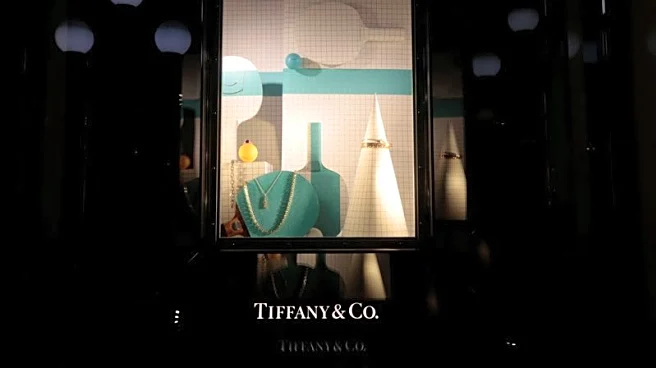What's Happening?
LVMH, the owner of Tiffany, is facing challenges due to soaring gold prices, US tariffs, and a weaker dollar, which are impacting profit margins in the luxury goods industry. Gold prices have surged above $4,000 an ounce, driven by economic and geopolitical uncertainty. This has led to pressure on profit margins, prompting brands to consider price hikes. LVMH is expected to report flat third-quarter sales, with declines in fashion and leather goods but slight growth in watches and jewelry. The company is navigating these challenges while maintaining its position in the luxury market.
Why It's Important?
The rise in gold prices and other economic factors are significant for the luxury goods industry, affecting cost structures and pricing strategies. LVMH's experience highlights the broader challenges faced by luxury brands in maintaining profitability amid fluctuating commodity prices and economic conditions. As brands consider price adjustments, they must balance maintaining consumer demand with protecting margins. This situation may influence strategic decisions across the industry, impacting product offerings and market positioning.
What's Next?
LVMH and other luxury brands may continue to explore strategies to mitigate the impact of rising gold prices, such as diversifying product lines or optimizing supply chains. Stakeholders will watch for potential price adjustments and their effects on consumer demand. The industry may also focus on enhancing brand value and customer loyalty to sustain growth in challenging economic conditions.
Beyond the Headlines
The challenges faced by LVMH may reflect broader economic trends, such as currency fluctuations and geopolitical tensions. These factors could influence global trade dynamics and consumer spending patterns, prompting luxury brands to adapt their strategies to remain competitive.












